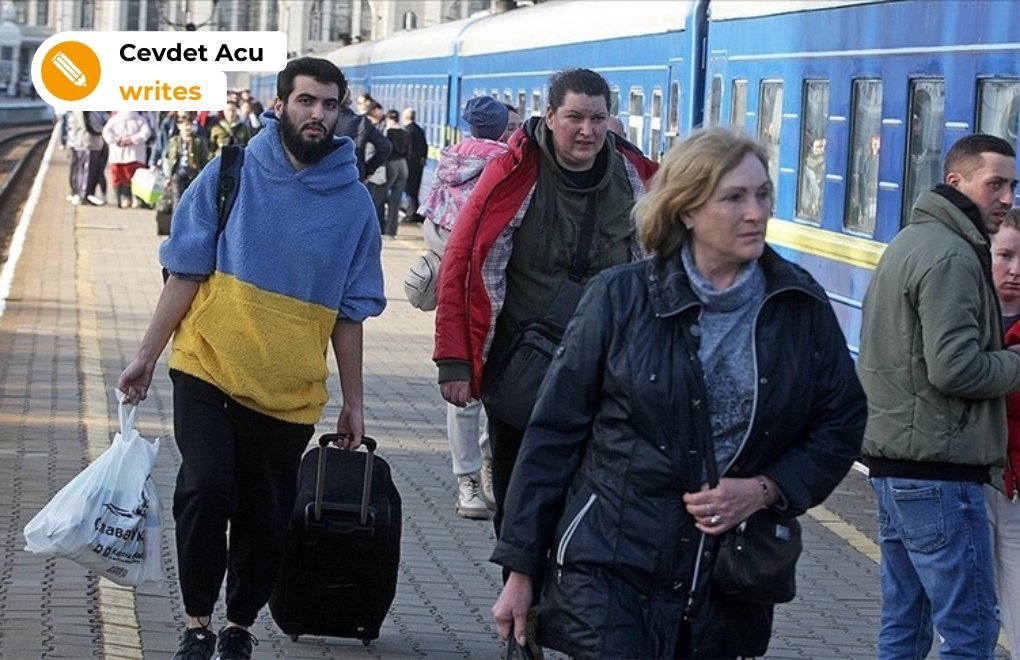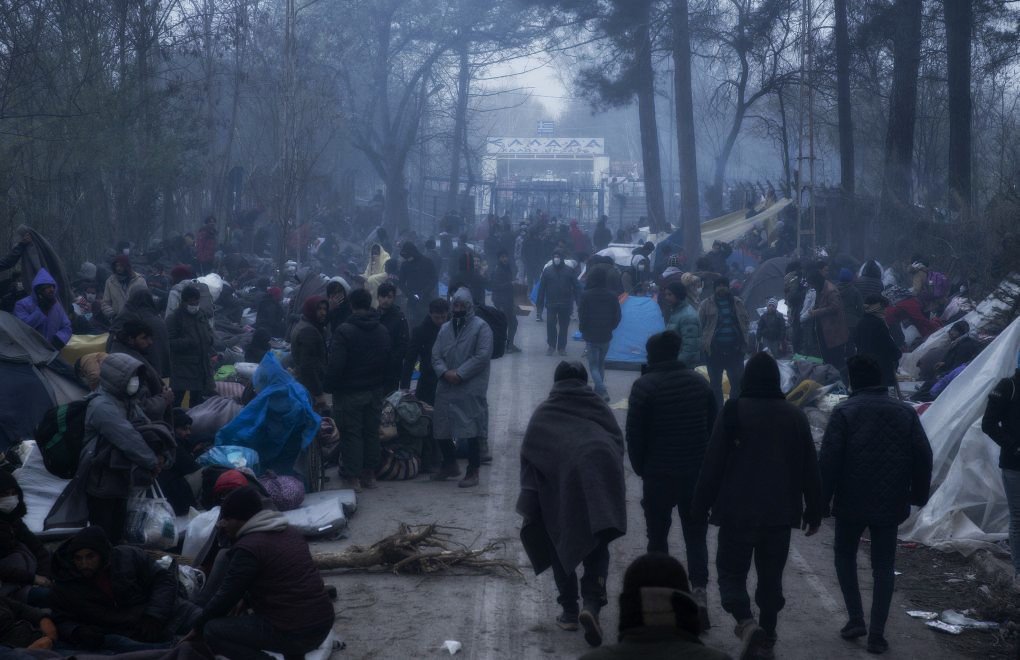Click to read the article in Turkish
44 years ago, on March 16, 1988, the regime of then-President of Iraq, Saddam Hussein, committed one of the biggest massacres against humanity: The Iraqi airforce killed thousands of Kurdish civilians by using chemical weapons in Halabja, a town in the Kurdistan Region of Iraq (KRI).
Halabja Massacre comes to mind with the words of a child who fell on the ground due to a chemical gas on March 16, 1988: "Dayê bêhna sêva tê" (in Kurdish means; Mom, there is a smell of apple).
On March 16, 1988, the Halabja Massacre under the name of the Anfal operation was not a spontaneous atrocity of the dictator Saddam Hussein. The brutal process from the Anfal operation to the Halabja Massacre actually started in the 1970s in Iraq. The racist Ba'ath party in Iraq began to pursue assimilation policies towards the Kurds after it came to power in 1968, and these policies were continued more vigorously when Saddam Hussein became the president of Iraq in 1979.
Arabization
The Ba'athist Arabization campaigns forced Kurdish people to move somewhere else in Iraq as they were intended to shift the demographics of Northern Iraq in favour of Arab domination. Along with the systematic assimilation policies, it was also aimed to evacuate the villages where Kurdish people largely were residents.In this way, the rural area in the region would be depopulated entirely, and the people's support for the Peshmerga, the military forces of the Kurdistan Region in Iraq, would be prevented.
The second main reason that accelerated the process leading to the Halabja Massacre started when the Iraqi regime declared war on Iran on September 22, 1980. Halabja is located approximately 11 kilometres from the Iranian border. Both countries at war were trying to use the Kurds living within their borders for their political benefits against each other. During the Iran-Iraq war, the Peshmerga forces of the Patriotic Union of Kurdistan, led by Jalal Talabani, had taken control of the Halabja region. After that, Saddam's regime immediately launched an eight-stage operation in in the Kurdistan Region of Iraq, called Anfal, between February 23 and September 16, 1988.
Warplanes bombed Halabja
Saddam appointed Ali Hasan al-Majid, Saddam Hussein's notorious cousin known as "Chemical Ali", both to stop the Iranian army's advance and kill all of the Kurdish civilians in Halabja. Iraqi warplanes started bombing Halabja, and the bombs dropped on the city were part of a meticulously designed plan for genocide against Kurdish civilians.
Kurdish residents in Halabja were unaware of the cruel plans of the Saddam regime at that time. The Iraqi airforces first began dropping bombs on Halabja on March 16, 1988. Halabja residents perceived this attack as a part of the war that had been going on for many years in Iraq, and they hid in the shelters. However, afterwards, the Iraqi army used conventional weapons, causing the windows of the houses/shelters to be smashed. After that, the second attack started. Iraqi airforces began to use chemical weapons, including mustard gas and the nerve agents sarin, tabun, and VX, in the civilian parts of the city. Those who hide in the shelters could not escape from the poisonous gases since the windows of the houses were broken.
Those who witnessed this barbaric attack say that the chemical gas had the smell of apple; the town was engulfed in a stench like rotten apples. They also reported that chemical gases in the bombs that fell on the city of Halabja began to spread throughout the city within a few minutes and instantly killed people who were exposed. That day, around 5,000 people -mainly women and children- died within a few minutes due to one of the world's largest chemical attacks on civilians. It is reported up to 12,000 Kurdish people have lost their lives since then. In addition, during the Anfal operation, 4,500 villages were destroyed, and approximately 200,000 Kurds were massacred between 1976 and 1988.
The concept of Anfal, the name of this barbaric operation, is derived from Surah Anfal in the Qur'an, a holy book of Islam. Anfal means "The Spoils of War" in Arabic. Anfal concept was used to describe the military campaign of extermination and looting against Kurdish civilians in Halabja.
One of the reasons why the attack was named Anfal is because Saddam's regime tried to portray the Kurds as "infidels". Although the Kurds who were massacred were Sunni Muslims in Halabja...
Saddam's regime was trying to create legitimacy for themselves by fostering Kurdish hostility by using Islamic concepts. Thus, all kinds of atrocities, including ground operations, aerial bombings, systematic destruction of settlements, mass forced migrations, and the use of chemical weapons, were carried out within the scope of the Anfal Operation.
Principles of Islam used for alienation
Whatever I write will not be enough to describe the Halabja Massacre, one of the greatest human tragedies in history. I think it is time to question why the Middle East countries, in particular, create despots and dictators like Saddam Hussein within their borders. It is known that a common feature of despotic leaders, especially in the Middle East area, is to alienate people against each other by using the principles of Islam for their own interests.
Any evaluation without questioning why there is so much corruption and despotism in the Middle East countries and why these despotic leaders easily turn people against each other, especially by using the sacred values of Islam, may lead to another possible massacre or savagery in the future.
It also time to ask: Which country provided chemical weapons to Saddam's regime, and why the western powers did not impose any sanctions against Saddam and Iraqi government during that time?
Finally, today is the day to honor those innocent people who were killed or injured due to the chemical attack on March 16, 1988, in Halabja; let this day be a reminder to prevent future massacre attacks on humanity. Never again. (CA/EMK/SD)




.jpg)


.jpg)
.jpg)


